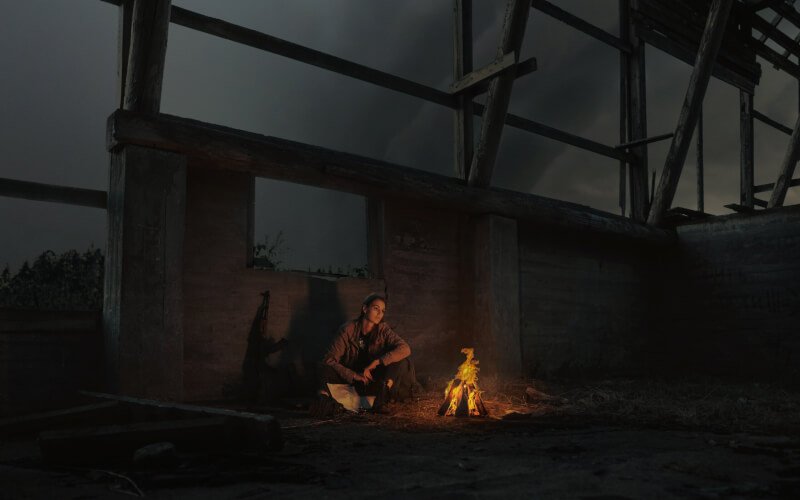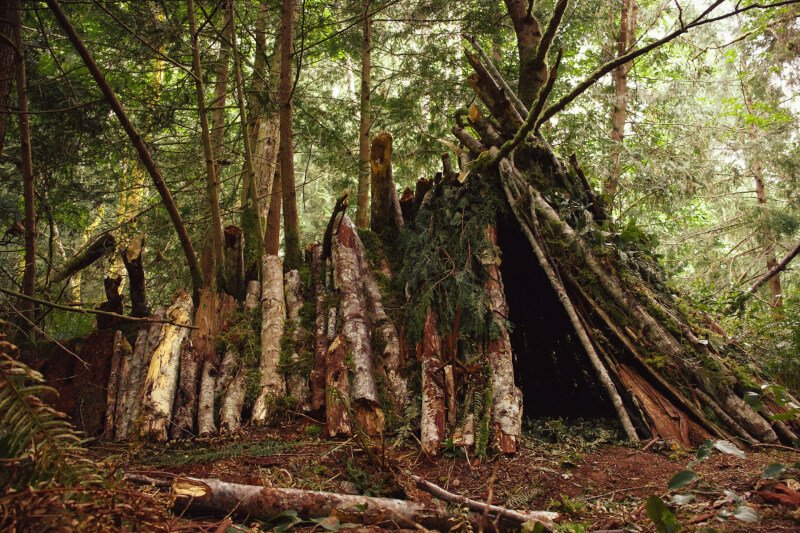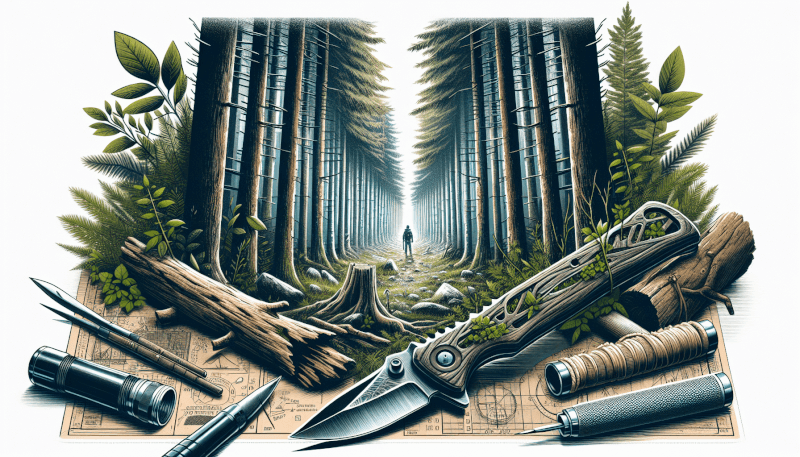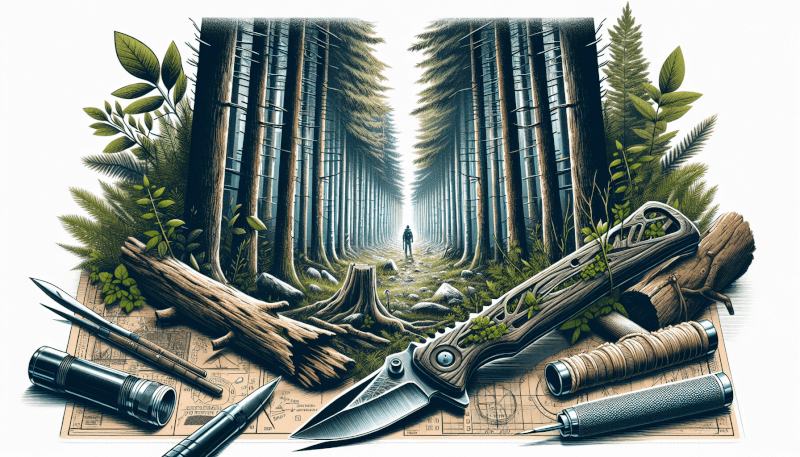Imagine yourself surrounded by lush green forests, towering mountains, and crystal clear streams. The wilderness calls to you, urging you to leave behind the noise and chaos of the modern world. But what if you had to survive in this untamed playground with nothing more than the clothes on your back and a trusty knife by your side? In this article, we will explore the art of wilderness survival, offering invaluable tips and techniques to help you thrive in the great outdoors. From finding food and water sources to building shelter and navigating without a compass, prepare to embark on a thrilling adventure of self-reliance and resilience. So, grab your gear and let’s discover the secrets of living off the land in the most exhilarating way possible.

The Importance of Wilderness Survival Skills
In today’s modern world, where everything seems to be readily available at our fingertips, it’s easy to forget the importance of wilderness survival skills. However, the truth is that you never know when you might find yourself in a situation where these skills can mean the difference between life and death. Understanding the basic principles of wilderness survival is not only crucial for outdoor enthusiasts and adventurers, but it’s also a valuable skillset for anyone looking to be more self-reliant and prepared for unexpected emergencies.
Understanding the Basic Principles of Wilderness Survival
Before delving into the various skills necessary for wilderness survival, it’s important to have a solid understanding of the basic principles. These principles serve as the foundation for your survival strategy and can guide you in making the right decisions when faced with challenging situations.
First and foremost, it’s crucial to prioritize your basic survival needs, which include water, shelter, fire, and food. These are the essential elements that will keep you alive in the wilderness. By ensuring you meet these needs, you increase your chances of survival significantly.
Next, it’s essential to stay calm and composed, even in the face of adversity. Panic can cloud your judgment and hinder your ability to think clearly and make rational decisions. Maintaining a positive and resilient mindset is key to overcoming challenges and staying focused on your survival goals.
Lastly, it’s crucial to understand the importance of adaptability and problem-solving. In a wilderness survival situation, things may not always go according to plan. Being able to adapt to changing circumstances and think creatively when faced with obstacles is essential for your success.
The Benefits of Learning Wilderness Survival Skills
Learning wilderness survival skills goes beyond just knowing how to survive in the wild. It offers a multitude of benefits that can positively impact your life in various ways.
One of the most significant benefits of acquiring wilderness survival skills is the sense of self-reliance and empowerment it brings. Knowing that you have the knowledge and ability to provide for yourself in the wilderness builds confidence and independence. It allows you to venture into the great outdoors with a sense of freedom and security, knowing that you can rely on your skills to overcome any challenges that may arise.
Additionally, learning wilderness survival skills fosters a deeper appreciation and connection to nature. When you understand the intricacies of the natural world, you begin to see it in a new light. You develop a heightened sense of awareness and respect for the environment, which can lead to more sustainable and responsible practices when interacting with nature.
Moreover, the skills learned in wilderness survival can have practical applications beyond just survival situations. Many of the skills and techniques can be applied to everyday life, such as problem-solving, adaptability, and basic first aid. These skills can enhance your overall preparedness for any unexpected events or emergencies that may occur.
Preparing Mentally for Wilderness Survival
While physical skills and techniques are undoubtedly essential for wilderness survival, it’s equally crucial to prepare mentally for such situations. Your mindset plays a significant role in your ability to navigate and overcome the challenges you may face in the wilderness.
Developing a positive and resilient mindset is key to maintaining your morale and motivation during difficult times. The wilderness can be a harsh and unforgiving environment, and it’s essential to remain optimistic and focused on your survival goals. Positive self-talk, visualization techniques, and finding joy in small victories can all contribute to a strong and resilient mindset.
Coping with stress and fear is another crucial aspect of mental preparation for wilderness survival. The wilderness can be a source of both physical and emotional stress, and it’s important to develop healthy coping mechanisms to manage these pressures. Deep breathing exercises, meditation, and staying grounded in the present moment can help alleviate anxiety and keep fear at bay.
Lastly, it’s important to emphasize the importance of adaptability and problem-solving in a wilderness survival mindset. Being mentally prepared to think creatively and adapt to changing circumstances will significantly increase your chances of survival. Cultivating a mindset that embraces challenges and seeks solutions is an essential quality for wilderness survival.
Gathering and Purifying Water
When it comes to wilderness survival, water is of utmost importance. Your body can only survive for a few days without water, making it a top priority in any survival situation. Understanding how to identify reliable sources of water, purify it, and create a water storage system are crucial skills to ensure your hydration needs are met.
Identifying Reliable Sources of Water
In the wilderness, water sources may not always be readily visible or easily accessible. Knowing how to identify reliable sources of water is essential for survival. Look for indicators such as vegetation, animal tracks, or the sound of running water, which can help guide you toward potential water sources. Be cautious of stagnant water, as it may be contaminated with harmful bacteria.
Remember to prioritize safety when accessing water sources. In some cases, you may need to take risks to reach water, but always evaluate the potential dangers and make informed decisions. It’s also advisable to carry a water filter or purification tablets to ensure the water you consume is safe for consumption.
Methods for Purifying Water in the Wilderness
Once you’ve located a water source, it’s crucial to purify the water to remove any potential contaminants. There are several methods you can use to purify water in the wilderness, depending on the resources available to you:
Boiling: Boiling water is one of the most effective methods of purification. Bring the water to a rolling boil for at least one minute to kill any harmful bacteria or pathogens.
Water Filters: Portable water filters, such as pump filters or straw filters, can effectively remove contaminants from water. These filters typically use a combination of activated carbon and a microscopic membrane to filter out impurities.
Chemical Treatment: Water purification tablets or liquid solutions, such as iodine or chlorine, can be used to treat water and kill bacteria and viruses. Follow the instructions provided with the treatment tablets or liquid for the recommended dosage and wait time.

Creating a Water Storage System
In addition to gathering and purifying water, it’s important to have a system in place for storing and conserving water in the wilderness. Containers such as water bottles, canteens, or collapsible water pouches can be used to store water for future use. Make sure to seal the containers tightly to prevent contamination.
Consider creating a water catchment system using a tarp or plastic sheeting to collect rainwater. Secure the tarp between trees or use rocks to create a funnel shape, allowing the rainwater to collect in a container below. This method can supplement your water supply, especially in areas where natural water sources may be scarce.
Remember to ration your water supply and use it judiciously. Avoid activities that cause unnecessary sweating or exertion to conserve water and maintain your hydration levels.
Building a Shelter
When you find yourself in a wilderness survival situation, having a suitable shelter is crucial for your safety and well-being. A shelter provides protection from the elements, keeps you warm, and provides a sense of security. Knowing how to select a suitable location, understanding different types of shelters, and having the essential tools and materials are all key aspects of building a shelter in the wilderness.
Selecting a Suitable Location for Shelter
When choosing a location for your shelter, there are several factors you should consider to ensure your safety and comfort. Look for a spot that is elevated and dry, away from potential hazards such as falling branches or flash flood-prone areas. Avoid setting up your shelter in low-lying areas that may collect water or areas with a high risk of rockslides.
Take advantage of natural features in the environment, such as large rocks or trees, that can offer additional protection and stability for your shelter. These natural features can act as windbreaks or provide insulation against the cold ground.
Different Types of Shelters in a Wilderness Setting
In a wilderness survival situation, it’s important to be familiar with various types of shelters that can be constructed using the resources available to you. Some common types of wilderness shelters include:
Lean-to: This is one of the simplest shelters to construct. It involves propping a large branch or pole against a solid support, such as a tree, and placing smaller branches or leaves against it to create a roof.
Debris Hut: A debris hut is a more elaborate shelter that provides greater protection from the elements. It involves creating a frame using branches and covering it with leaves, pine needles, or any other debris available in the area.
Tarp Shelter: If you have a tarp or a large piece of waterproof material, you can easily create a tarp shelter by tying the corners to trees or using trekking poles to prop it up. This type of shelter offers quick and effective protection against rain and wind.
Essential Tools and Materials for Building a Shelter
To construct a shelter in the wilderness, it’s essential to have a few basic tools and materials on hand:
Knife: A quality knife is a versatile tool that can be used for cutting branches, vines, or cordage. It’s crucial to have a reliable and sharp knife to aid in shelter construction.
Cordage: Strong cordage, such as paracord or natural fibers like vines or strips of bark, is essential for tying and securing the various components of your shelter.
Insulating Material: When constructing a shelter, having insulation between you and the ground is crucial for retaining body heat. Collect dry leaves, moss, or pine needles to create a layer of insulation within your shelter.
Having these tools and materials readily available in your wilderness survival kit can make a significant difference in your ability to create a secure and comfortable shelter.
Starting a Fire
Fire is not only crucial for warmth, but it also provides a means for cooking food, purifying water, and signaling for help in a wilderness survival scenario. Understanding the importance of fire, different methods for starting a fire without matches, and finding and preparing firewood are essential skills for every wilderness survivalist.
The Importance of Fire in Wilderness Survival
Fire is not only a source of warmth and comfort, but it also serves several other critical functions in a wilderness survival situation. Fire can help keep dangerous animals at bay and provide a deterrent against potential threats. Additionally, fire can be used to dry wet clothing, sanitize tools, and create smoke signals to attract rescuers.
In terms of psychological well-being, fire can provide a sense of security and companionship. The flickering flames can bring comfort and reassurance during challenging times, reducing stress, and improving morale.

Methods for Starting a Fire Without Matches
In the absence of matches or a lighter, there are several alternative methods for starting a fire in the wilderness. These methods rely on using friction or creating a spark to ignite the kindling:
Fire by Friction: One common method is the bow drill method, which involves using a bow to create rotational friction on a wooden spindle. The friction generates heat, eventually creating an ember that can be transferred to a bundle of tinder to start the fire.
Flint and Steel: A flint and steel fire starter consists of striking a hard mineral, such as flint, against a piece of steel, creating sparks that ignite the tinder. This method requires proper technique and practice to generate sufficient sparks.
Char Cloth and Fire Piston: A fire piston is a device that compresses air at a high speed, generating heat through rapid compression, which ignites the char cloth. Char cloth is a small piece of fabric that has been charred in the absence of oxygen, making it highly flammable.
Finding and Preparing Firewood
Once you have successfully ignited a fire, it’s important to have a steady supply of firewood to keep the flames going. Look for dead branches or fallen trees, as they tend to be drier and more suitable for burning. Collect firewood in different sizes, ranging from small twigs to larger logs, as this allows you to control the intensity and duration of the fire.
Before using firewood, it’s crucial to prepare it properly to promote efficient burning. Remove any wet or damp outer layers and split larger logs into smaller pieces to expose the dry inner sections. This will ensure that the firewood ignites quickly and provides a consistent source of heat.
Finding and Procuring Food
In a wilderness survival situation, finding and procuring food is essential for sustaining your energy and ensuring long-term survival. While it may be tempting to resort to extreme measures, such as hunting large game, it’s important to prioritize safety and focus on more practical methods of obtaining food.
Identifying Edible Plants in the Wilderness
One of the safest and most readily available sources of food in the wilderness is edible plants. However, it’s vital to have a good understanding of the local flora and be able to identify edible plants from poisonous ones. Look for identification guides specific to your geographical location and take the time to study and practice identifying edible plants before venturing into the wilderness.
Common edible plants include berries, nuts, and certain types of leaves. However, it’s crucial to exercise caution and avoid consuming any plant unless you are 100% certain of its edibility. Some edible plants may have poisonous look-alikes, so it’s essential to be diligent in your research and observations.
Hunting and Trapping Techniques
In certain wilderness environments, hunting and trapping can be viable methods of procuring food. However, it’s important to have the necessary skills and knowledge to engage in these activities responsibly and ethically.
If you choose to hunt, familiarize yourself with local hunting regulations and obtain any necessary permits or licenses. Focus on small game, such as rabbits or squirrels, as they are more abundant and easier to hunt. Learn effective hunting techniques, such as tracking, stalking, and using bow and arrow or primitive traps.
Trapping is another method that can be used to catch small game. Research different trapping techniques, such as pit traps or simple snares, and practice setting them up in a controlled environment before relying on them for survival.
Fishing and Gathering Strategies
Water bodies in the wilderness often teem with various fish species, making fishing a viable source of sustenance. Research the local fish species and learn effective fishing techniques, such as using a fishing rod, creating a makeshift fishing net, or constructing simple fish traps.
Gathering strategies, such as foraging for insects or shellfish, can also provide valuable sources of protein. Insects, such as ants or crickets, contain high levels of protein and can be consumed safely after proper cooking or preparation. Shellfish found along coastal regions can be a rich source of nutrients, but be sure to gather them from unpolluted waters and confirm their edibility before consumption.
Remember to practice responsible fishing and gathering techniques, respecting the natural environment and adhering to any local regulations or restrictions.
Navigation and Orienteering
Navigating through the wilderness can be a daunting task, especially without the aid of technology or familiar landmarks. Understanding basic navigation tools and techniques, utilizing natural landmarks, and creating a survival plan are essential for staying on course and reaching safety.

Understanding Basic Navigation Tools and Techniques
While GPS devices and compasses are helpful tools, they may not always be readily available in a wilderness survival situation. Learning basic navigation techniques can help you find your way and stay on track.
Start by familiarizing yourself with basic map reading skills, including understanding topographic maps and identifying key features such as hills, rivers, and valleys. Learn how to use a compass to orient yourself and determine your direction of travel. Practice triangulation techniques to pinpoint your location or navigate toward a specific point.
Using Natural Landmarks and Celestial Navigation
In the absence of traditional navigation tools, nature can provide invaluable guidance. Pay attention to the position of the sun, moon, and stars, as they can serve as natural compasses. The sun rises in the east and sets in the west, allowing you to determine east and west directions. At night, the North Star (Polaris) can help you find north.
Observing natural landmarks, such as distinctive trees, rock formations, or bodies of water, can assist in maintaining your bearings. These landmarks can act as reliable reference points, especially in areas without distinct trails or markings.
Utilize the environment to your advantage, using cues from vegetation, animal tracks, or patterns in the landscape to stay oriented and follow a planned route.
Creating and Following a Wilderness Survival Plan
Before embarking on any wilderness adventure, it’s crucial to create a well-thought-out survival plan. This plan should outline your intended route, potential dangers or risks, and contingency measures in case of unforeseen circumstances.
Consider factors such as available water sources, potential shelter locations, and areas with ample food sources when planning your route. Identify any potential hazards or risks, such as dangerous wildlife or challenging terrain, and plan alternative routes or courses of action.
Share your survival plan with someone you trust before heading out into the wilderness. Ensure they have a clear understanding of your route and expected return time. This way, if something goes wrong, they can initiate a search or provide crucial information to search and rescue teams.
Remember to continually reassess and adjust your plan as circumstances dictate. Flexibility and adaptability are key to successfully navigating the wilderness and surviving challenging situations.
First Aid and Medical Skills
In a wilderness survival scenario, injuries and medical emergencies can occur. Having a basic understanding of first aid, essential supplies, and common wilderness injuries can make a significant difference in your ability to provide immediate care and increase the chances of a successful recovery.
Essential First Aid Supplies for Wilderness Survival
A well-equipped first aid kit is an essential component of your wilderness survival gear. Some essential supplies to include in your kit are:
Adhesive bandages: Various sizes of adhesive bandages can be used to cover and protect minor cuts and abrasions.
Sterile gauze pads: Gauze pads are used to cover larger wounds and control bleeding.
Antiseptic ointment: Applying antiseptic ointment to wounds helps prevent infection.
Tweezers: Tweezers are useful for removing splinters or foreign objects from wounds.
Waterproof tape: Waterproof tape can be used to secure bandages and dressings in wet conditions.
Pain relievers: Over-the-counter pain relievers can help alleviate pain and reduce inflammation.
Ensure your first aid kit is well-stocked, and check expiration dates periodically to ensure the contents remain effective.
Common Wilderness Injuries and How to Treat Them
In a wilderness setting, various types of injuries can occur. Some common wilderness injuries and their treatments include:
Cuts and scrapes: Clean the wound with clean water or antiseptic wipes and apply an adhesive bandage or sterile gauze pad. If bleeding persists, apply direct pressure and elevate the injured area.
Sprains and strains: Rest the injured limb, elevate it if possible, and apply a cold compress or ice pack to reduce swelling. Use a compression bandage to provide support and limit movement.
Burns: Remove the source of heat and cool the burn with cold water for at least 10 minutes. Cover the burn with a sterile non-adherent dressing and seek medical attention for severe or large burns.
Bites and stings: Clean the affected area with soap and water and keep it elevated if possible. Apply a cold compress and take over-the-counter antihistamines to alleviate symptoms. Seek medical attention for severe allergic reactions or venomous snake bites.
It’s important to remember that first aid is meant to provide immediate care and should not replace professional medical treatment. Seek medical help as soon as possible for severe injuries or medical emergencies.
Basic CPR and Rescue Techniques
In the event of a cardiac arrest or near-drowning incident in a wilderness setting, knowing basic CPR techniques can be lifesaving. Learning how to perform CPR (cardiopulmonary resuscitation) and familiarizing yourself with rescue techniques, such as the recovery position or the Heimlich maneuver, can make a significant difference in emergency situations.
Consider taking a first aid and CPR certification course that specifically focuses on wilderness scenarios. These courses equip you with the knowledge and skills to respond effectively in emergency situations where access to medical help may be limited.
Remember to stay calm and evaluate the situation before taking action. Your ability to provide immediate care and perform lifesaving techniques can vastly improve the chances of survival for those in need.

Survival Mindset and Psychology
In a wilderness survival situation, your mindset and psychological well-being play a crucial role in your ability to navigate challenges and persevere. Developing a positive and resilient mindset, coping with stress and fear, and embracing adaptability and problem-solving are essential for long-term survival.
Developing a Positive and Resilient Mindset
Remaining positive and cultivating resilience are fundamental aspects of a survival mindset. Adopting an optimistic outlook and focusing on your capabilities can help combat feelings of helplessness or despair. Remind yourself of your strengths and previous achievements to boost your confidence in your ability to overcome challenges.
Coping with Stress and Fear in the Wilderness
The wilderness can present a range of stressors and fears, from physical dangers to isolation and uncertainty. Developing healthy coping mechanisms is essential for maintaining emotional well-being in challenging situations.
Practice deep breathing exercises, meditation, or mindfulness techniques to help reduce stress and promote calmness. Take time to connect with nature and find solace in its beauty and tranquility. Engage in activities that bring you joy and help distract from negative thoughts or anxieties.
Reach out to members of your group or support network for emotional support and encouragement. Sharing your experiences and concerns can help alleviate stress and foster a sense of camaraderie.
The Importance of Adaptability and Problem-Solving
In a wilderness survival scenario, things may not always go according to plan. Being mentally prepared to adapt to changing circumstances and think creatively is crucial for survival. Embrace uncertainty and view challenges as opportunities for growth and learning.
Develop problem-solving skills by analyzing situations objectively and considering all available options. Break complex problems into smaller, manageable tasks, and prioritize them based on their impact on your survival. Learn from mistakes or setbacks and adjust your approach accordingly.
Self-Defense and Safety
While the wilderness is a beautiful and awe-inspiring place, it also harbors potential dangers, including encounters with dangerous wildlife. Assessing risks, avoiding confrontations, and knowing basic self-defense techniques are essential for your safety in the wilderness.
Assessing Risks and Avoiding Dangerous Wildlife
Educate yourself about the local wildlife and the potential dangers they may pose. Research the types of animals you may encounter and understand their behaviors, habitats, and typical interactions with humans.
Avoid attracting wildlife by properly storing and disposing of food and waste. Keep a safe distance from wild animals and never approach or attempt to feed them. If you encounter a potentially dangerous animal, remain calm, back away slowly, and give the animal a clear escape route.
Basic Self-Defense Techniques in the Wilderness
In the unfortunate event of an animal attack or encounter with a threatening individual, basic self-defense techniques can make a critical difference in ensuring your safety.
Make yourself appear large and assertive by raising your arms and voice, which can deter animals and potential attackers. Back away slowly and avoid sudden movements or turning your back.
Carrying a whistle or air horn can be an effective tool for alerting others to your presence and potentially scaring off wildlife or attracting help.
Creating Effective Traps and Alarms
In some situations, creating traps and alarms can add an extra layer of protection and help alert you to potential threats. Research simple trapping techniques, such as setting snares or constructing tripwires, that can be used to trap small game or serve as early warning systems.
Remember to prioritize your safety when setting up traps or alarms and ensure that you are not inadvertently creating a dangerous situation for yourself or others.
Emergency Signaling and Communication
In a wilderness survival scenario, effective signaling and communication are crucial for attracting help and ensuring your safe rescue. Learn to use signaling devices and techniques, create effective distress signals, and utilize available communication tools in the wilderness.
Using Signaling Devices and Techniques to Attract Help
Several signaling devices can aid in alerting others to your presence in the wilderness. Whistles, handheld mirrors, and signal flares are lightweight and easy to carry, making them valuable tools for signaling for help in remote areas.
Additionally, creating visible signals using rocks, sticks, or brightly colored materials can communicate distress signals to search and rescue teams or passing aircraft.
Creating Effective Distress Signals
When creating distress signals, it’s important to use recognized symbols or universal distress signals to increase the chances of being understood. SOS (••• – – – •••) is one of the most recognized and widely used distress signals in Morse code, while three short blasts or three fires in quick succession can also indicate an emergency.
Using contrasting colors or patterns in your signals can increase their visibility and catch the attention of potential rescuers. Remember to position yourself or your signals in a location that can be easily spotted from the air or ground.
Utilizing Available Communication Tools in the Wilderness
In some wilderness areas, there may be limited communication infrastructure, such as cell phone service. However, it’s important to be aware of any available communication tools that can assist in calling for help.
Satellite phones or emergency beacons (personal locator beacons) can provide reliable communication in remote areas. Research the functionality and proper use of these devices before entering the wilderness to ensure you can utilize them effectively during an emergency.
Conclusion
In conclusion, wilderness survival skills are of utmost importance for anyone venturing into the great outdoors or looking to be more self-reliant. Understanding the basic principles of wilderness survival, gathering and purifying water, building a shelter, starting a fire, finding and procuring food, navigation and orienteering, first aid and medical skills, survival mindset and psychology, self-defense and safety, and emergency signaling and communication are all essential components of a comprehensive wilderness survival skillset.
By acquiring these skills and knowledge, you empower yourself to face any challenges that may arise in the wilderness confidently. Remember to prioritize safety, continuously improve your skills through practice and education, and always stay prepared for the unexpected. With the right mindset, skills, and preparation, you can truly embrace the adventure and beauty of living off the land with just the clothes on your back and the knife on your belt.


